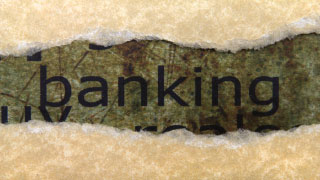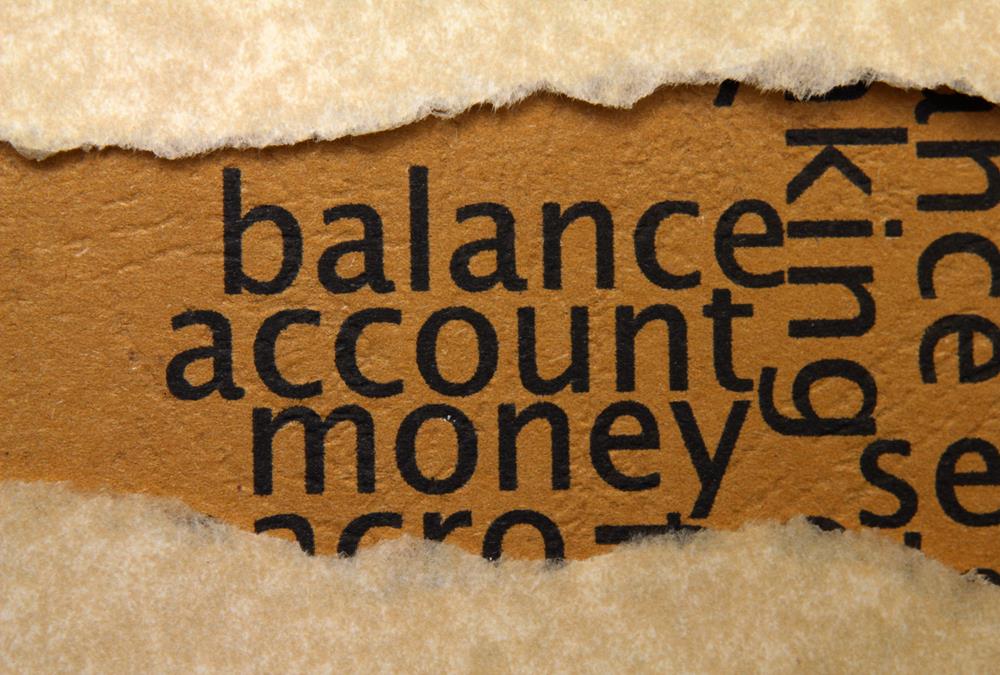- Home
- Business Processes
- Industry Knowledge
- Aerospace Industry
- Automotive Industry
- Banking Domain
- BFSI Industry
- Consumer/ FMCG Industry
- Chemicals Industry
- Engineering & Construction
- Energy Industry
- Education Domain
- Finance Domain
- Hospitality Domain
- Healthcare Industry
- Insurance Domain
- Retail Industry
- Travel and Tourism Domain
- Telecom Industry
- Leadership Skills
- eLearning
- Home
- Industry Knowledge
- Banking Domain
- Overview of Banking Industry: The Industry Basics
Overview of Banking Industry: The Industry Basics
Banks play a key role in the entire financial system by mobilizing deposits from households spread across the nation and making these funds available for investment, either by lending or buying securities. Today the banking industry has become an integral part of any nation’s economic progress and is critical for the financial wellbeing of individuals, businesses, nations, and the entire globe. In this article, we will provide an overview of key industry concepts, main sectors, and key aspects of the banking industry’s business model and trends.
A bank is a financial institution that provides banking and other financial services to their customers. Banks are a subset of the financial services industry and play an important role in the global economies. They are a key player in stimulating economic growth. Banking is an important undertaking. The movement of capital handled by banks allows economies to grow and prosper. Businesses and governments need money to operate, and banks act as intermediaries between the suppliers of funds and users of funds.
Banking Basics: The Law of Banking
 Banking law is based on a contractual agreement between the bank and customer. The customer is any entity for which the bank agrees to conduct an account or business. Given below are the generally accepted rights and obligations:
Banking law is based on a contractual agreement between the bank and customer. The customer is any entity for which the bank agrees to conduct an account or business. Given below are the generally accepted rights and obligations:
• The bank account balance is the financial position between the bank and the customer: when the account is in credit, the bank owes the balance to the customer; when the account is overdrawn, the customer owes the balance to the bank.
• The bank agrees to pay the customer's cheques up to the amount standing to the credit of the customer's account, plus any agreed overdraft limit.
• The bank may not pay from the customer's account without a mandate from the customer, example cheques drawn by the customer.
• The bank agrees to promptly collect the cheques deposited to the customer's account as the customer's agent, and to credit the proceeds to the customer's account.
• The bank has a right to combine the customer's accounts, since each account is just an aspect of the same credit relationship.
• The bank has a lien on cheques deposited to the customer's account, to the extent that the customer is indebted to the bank.
• The bank must not disclose details of transactions through the customer's account—unless the customer consents, there is a public duty to disclose, the bank's interests require it, or the law demands it.
• The bank must not close a customer's account without reasonable notice, since cheques are outstanding in the ordinary course of business for several days.
These implied contractual terms may be modified by express agreement between the customer and the bank. The statutes and regulations in force within a particular jurisdiction may also modify the above terms and/or create new rights, obligations or limitations relevant to the bank-customer relationship.
Types of Banks: Commercial & Investment Banking
 The banking industry can be divided into two categories ‘commercial-banking’ and ‘investment-banking’. Commercial banks play a key role in the entire financial system by mobilizing deposits from households spread across the nation and making these funds available for investment, either by lending or buying securities. Investment Banks, on the other hand, raise capital (cash/money) for companies, which companies need in order to grow and expand their businesses. Investment banks sell securities to public investors in the form of stocks or bonds.
The banking industry can be divided into two categories ‘commercial-banking’ and ‘investment-banking’. Commercial banks play a key role in the entire financial system by mobilizing deposits from households spread across the nation and making these funds available for investment, either by lending or buying securities. Investment Banks, on the other hand, raise capital (cash/money) for companies, which companies need in order to grow and expand their businesses. Investment banks sell securities to public investors in the form of stocks or bonds.
Distinctive types of banks are evolving to cater to various business demands, social needs, and global complexities. These different banking institutions conduct their operations in a different manner. However, on the basis of their functions, clientele served and products or services offered, we can classify banks as follows:
Retail Banks
Commercial banks
Investment Banks
Cooperative banks
Central banks
Specialized banks
Business Model: Customer Profiles
 Banks are large and complex organizations. Their clients range from individuals and institutions, all the way up to the governments and central banks of entire countries. This industry builds and maintains financial relationships with a variety of customers ranging from individuals to governments to supply financial products and services. Given below are the major classification of banking customers:
Banks are large and complex organizations. Their clients range from individuals and institutions, all the way up to the governments and central banks of entire countries. This industry builds and maintains financial relationships with a variety of customers ranging from individuals to governments to supply financial products and services. Given below are the major classification of banking customers:
• Individual Consumers
• Small Businesses & Traders
• Farmers & Rural Consumers
• Corporates and Corporations
• Banks – Domestic & International
• Governments
• Institutional Investors
• Non-Profit Organizations
• International Clients
Business Model: Banking Products & Services

The Banking sector offers several facilities to their customers including safeguarding their money and valuables and providing them with numerous types of credit loans to meet their many needs like home loans, consumer loans, personal loans, etc. Banks also provide additional services like credit, and payment services, such as checking accounts, money orders, and cashier's cheques. The banks also offer investment and insurance products. The key operational activities are listed below:
- Acceptance of Deposits
- Lending of Funds
- Clearing of Cheques
- Remittance of Funds
- Lockers & Safe Deposits
- Bill Payment Services
- Online Banking
- Credit & Debit Cards
- Overseas Banking Services
- Wealth Management
- Investment Banking
- Social Objectives

Business Model: Functions of the Banking Industry
 The banking industry is growing rapidly. It's estimated that the assets of the 1,000 largest banks are worth almost $100 trillion USD. With the growth in the industry, banks manage a diverse portfolio of functions. Bank provides various services and offers many products. The following discussion explains the key functions of the bank:
The banking industry is growing rapidly. It's estimated that the assets of the 1,000 largest banks are worth almost $100 trillion USD. With the growth in the industry, banks manage a diverse portfolio of functions. Bank provides various services and offers many products. The following discussion explains the key functions of the bank:
Provide security to the savings of customers by safeguarding it
Offering interest on the deposits kept with it
Control the supply of money and credit
Arrange funds to the parties who need them by borrowing from parties who have surplus
Encourage public confidence in the working of the financial system
Increase savings speedily and efficiently
Avoid focus of financial powers in the hands of a few individuals and institutions
Set equal norms and conditions to all types of customers
Business Model: Dynamic Regulatory Environment
 Banks operating in most of the countries are exposed to various stringent regulations. Most governments enforce rules and procedures to govern their operations and service offerings, and the manner in which they grow and expand their facilities to better serve the public. A banker works within the financial system to provide loans, accept deposits, and provide other services to their customers. They must do so within a climate of extensive regulation, designed primarily to protect the public interests. The main reasons why banks are heavily regulated are as follows:
Banks operating in most of the countries are exposed to various stringent regulations. Most governments enforce rules and procedures to govern their operations and service offerings, and the manner in which they grow and expand their facilities to better serve the public. A banker works within the financial system to provide loans, accept deposits, and provide other services to their customers. They must do so within a climate of extensive regulation, designed primarily to protect the public interests. The main reasons why banks are heavily regulated are as follows:
• To protect the safety of the public's savings.
• To control the supply of money and credit in order to achieve a nation's broad economic goal.
• To ensure equal opportunity and fairness in the public's access to credit and other vital financial services.
• To promote public confidence in the financial system, so that savings are made speedily and efficiently.
• To avoid concentrations of financial power in the hands of a few individuals and institutions.
• Provide the Government with credit, tax revenues, and other services.
• To help sectors of the economy that they have special credit needs for example Housing, small business and agricultural loans, etc.
Current Industry Trends
 As a variety of models for cooperation and integration among finance industries have emerged, some of the traditional distinctions between banks, insurance companies, and securities firms are fast diminishing. In spite of all these developments, banks continue to maintain and perform their primary role—accepting deposits and lending funds from these deposits. During recent times, technological advances have enabled banks to extend their reach globally, and there is no longer a need for customers to visit bank branches for every transaction, as most of the transactions can happen online.
As a variety of models for cooperation and integration among finance industries have emerged, some of the traditional distinctions between banks, insurance companies, and securities firms are fast diminishing. In spite of all these developments, banks continue to maintain and perform their primary role—accepting deposits and lending funds from these deposits. During recent times, technological advances have enabled banks to extend their reach globally, and there is no longer a need for customers to visit bank branches for every transaction, as most of the transactions can happen online.
The growth in cross-border activities has also increased the demand for banks that can provide various services across borders to different nationalities. Despite these advances in cross-border activities, the banking industry is nowhere near as globalized as some other industries. There is no doubt that “Technology” is going to be a catalyst in that growth, creating huge opportunities for professionals with a good understanding of the banking industry domain.
Banking Domain Knowledge - Resources
Related Links
You May Also Like
-
Definition of Bank: Meaning of the term Bank and the Business of Banking
What do we mean by the word bank? How did the word bank originate? What is the most simple and concise definition of a bank that explains the fundamentals of the banking process? Does the definition of banking vary from country to country? What are the key differentiators between any other business and a Bank? Get answers to all these questions and explore the basics of bank and banking as an industry.
-
History of Banking: Evolution of Banking as an Industry
Banking is one of the oldest industries and banking in the form that we know of began at about 2000BC of the ancient world. It started with merchants making grain loans to farmers and traders while carrying goods between cities. Since then, the banking industry has evolved from a simplistic barter system and gift economies of earlier times to modern complex, globalized, technology-driven, and internet-based e-banking model. In this article, we will take you through the major events and developments in the history of the banking industry.
-
History of Banking: Famous Banks from the Past
Seven hundred years ago a bank was established in Venice, which made transactions resembling modern banking. In 1407, another bank was founded in Italy under the name of Banco di San Giorgio which was one of the oldest chartered banks in Europe. Sveriges Riksbank (Riksbanken), is the central bank of Sweden and the world's oldest central bank. The Bank of England is the second oldest central bank in the world, and most modern central banks have been based on that model. Let us explore some interesting events as we learn more about these early banking institutions.
-
History of Banking: The Gold Standard & Fractional Reserve Banking
Gold has always been considered as a safe economic investment and treated like a currency. All of the economically advanced countries of the world were on the gold standard for a relatively brief time. Under a gold standard, the value of a unit of currency, such as a dollar, is defined in terms of a fixed weight of gold and banknotes or other paper money are convertible into gold accordingly. Explore the fascinating history of the gold standard through the lens of history and also learn why banks hold back a certain fraction of deposits as reserves.
-
Overview of Banking Industry: The Industry Basics
Banks play a key role in the entire financial system by mobilizing deposits from households spread across the nation and making these funds available for investment, either by lending or buying securities. Today the banking industry has become an integral part of any nation’s economic progress and is critical for the financial wellbeing of individuals, businesses, nations, and the entire globe. In this article, we will provide an overview of key industry concepts, main sectors, and key aspects of the banking industry’s business model and trends.
-
Banking Sector, Segments & It's Classifications
The banking industry players deal in a variety of products from savings accounts to loans and mortgages, offer various services from check cashing to underwriting, caters to different types of customers from individuals to large corporates, serve diverse geographies from rural villages to cross-border operations. Thus the banking industry is made up of several types of banks, with their own objectives, roles, and functions. In this article, we will explore the various sectors, segments, and classifications of banking based on parameters like products, customers, types, etc.
-
Type of Banks: Different Types of Banks in India & their Functions
This article explains the banking structure in India and how different banks are classified as per RBI Norms. The Indian banking industry has been divided into two parts, organized and unorganized sectors. The organized sector consists of Reserve Bank of India, Commercial Banks and Co-operative Banks, and Specialized Financial Institutions (IDBI, ICICI, IFC, etc.). The unorganized sector, which is not homogeneous, is largely made up of money lenders and indigenous bankers. Learn what we mean by nationalized banks, scheduled banks, public sector banks, private banks, and foreign banks.
-
Types of Banks: Different Banks & their Classifications (Global)
The banking industry caters to various sections of society thus the focus of banking becomes varied, catering to the diverse needs of clients through different products, services, and methods. To meet this, we need distinctive kinds of banks addressing complex business & social needs. In this article, we will explain various types of banking institutions ranging from retail banks, commercial banks, co-operative banks, investment banks, central banks to various other types of specialized banks.
-
Banking Operations: Understanding Various Transactions & Activities
Banks perform a variety of operations ranging from basic or primary functions like day to day transactions at a branch to others that maybe the agency or general utility services in nature. The transactions that are incidental to revenue/sales or sustaining the business are an important element of the banking industry value chain. In this article, we will look at the key operations performed in the course of banking.
-
Banking Industry Business Model - Understanding How the Banking System Works
Banks are commercial profitable institutions and need to increase their business, grow their revenue, and provide returns to their owners. Unlike other stores and shops, banks are providing services rather than selling their products. Learn how banks get their funds and how they make money on services. Read more to learn how the banks earn their profit!
Explore Our Free Training Articles or
Sign Up to Start With Our eLearning Courses

About Us
Learning
© 2023 TechnoFunc, All Rights Reserved










